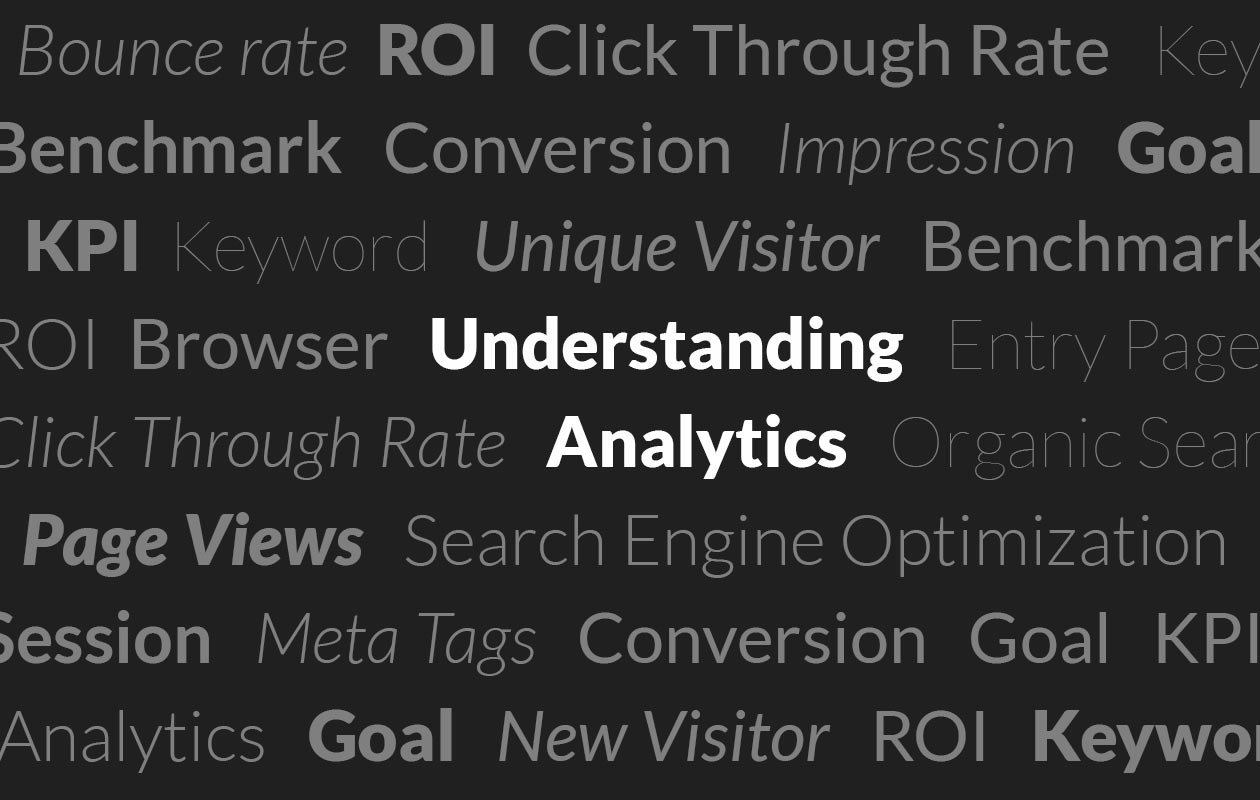Understanding Analytics: Part 1
Where are you going? Did you get there? These are common questions for a road trip, and they’re just as relevant to your digital projects. Are you working with purpose? If so, how will you know if you’ve achieved it?
When it comes to digital work, our secret Swiss army knife is analytics. It includes the measurement, collection, analysis, and reporting of web data for the purposes of understanding and optimizing web usage. In other words, the study of web usage behaviors. If we can define measurable goals, then we can finally answer the question: did we succeed?
Whether you’re an expert needing a refresher or a new-comer getting your feet wet, we’ve found that having a basic understanding of commonly used terms is important.
Here’s a list of commonly used terms:
Goal – An observable and measurable result having one or more objectives to be achieved within a more or less fixed timeframe.
ROI – Return on Investment, measuring after implementation; a lagging measurement
KPI – Key Performance Indicator, projecting target goals for measurement; a leading measurement
Benchmark – measurements that indicate a specific performance metric and allows comparison of metrics between like applications, websites, or companies
Bounce rate – the percentage of visitors to a particular website who navigate away from the site after viewing only one page
Click through rate – the percentage of people who access a hyperlink (usually an ad) online. The click through rate is calculated by taking the number of clicks your link/ad receives divided by the number of times your link/ad was shown (impressions)
Conversion – the point at which an activity or response to a call to action fulfills the desired outcome (i.e. subscribing to a newsletter or purchasing a product)
Impression – the number of times a piece of content (like an online ad) is seen; the views.
Keyword – in search engine optimization, the particular word or phrase that describes the contents of a web page. Keywords serve as clues or shortcuts that summarize the content of a page and help search engines match pages with searches
Meta tags – a tag (a coding statement) in the HTML that describes some aspect of the contents of a webpage
New visitor – visitors who have reached a site for the first time. This is important in comparison with return visitors as an indication of loyalty and site value
Organic search – describes search that generates results that are not paid advertisements
Search engine optimization – the process of maximizing the number of visitors to a particular website by ensuring that the site appears high on the list of results returned by search engines
Session – a record of a single visitor browsing a website during a given time period. This can include multiple screen or pageviews, events, or e-commerce transactions. Sessions end at midnight on the day a session was initiated or after 30 minutes of inactivity
Unique visitor – the number of distinct individuals who request pages from a website during a specific period, no matter how many times they visit
Check out Business Dictionary for a full list of definitions.
With a basic understanding of the terms used to describe and discuss analytics, you can now dive into analytic and metric reports with context. Understanding what the data associated with these terms means for your unique organization (your organization’s goals and KPIs) is the next step in gaining insight.
Check back for Part 2 on our Understanding Analytics series about how you can use analytical data to guide discussions and decisions!
